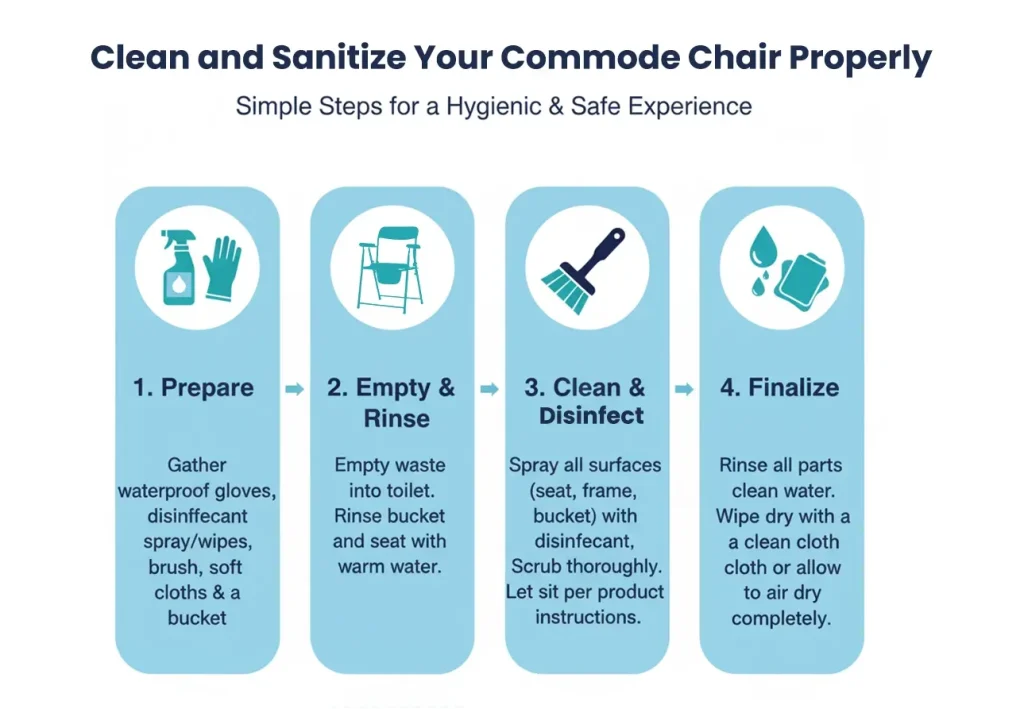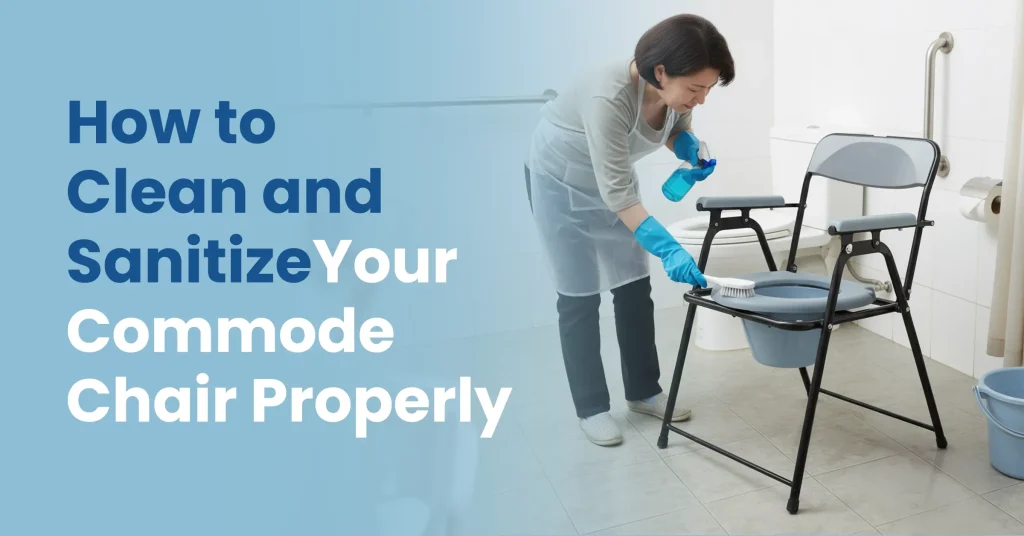A commode chair provides essential support for daily living. This important medical equipment ensures bathroom safety and independence. Proper maintenance protects both user health and equipment longevity. Regular cleaning prevents odor buildup and germ spread. Consistent hygiene practices create a safer home environment. This guide explains effective cleaning methods clearly. You will learn practical sanitization techniques for your bedside commode. These methods work for all commode chair types. They help maintain your bedroom commode chair perfectly.
Understanding Cleaning Importance for Commode Chairs
Commode chairs serve a vital health function. They differ significantly from regular toilets. Their placement in living spaces increases risk. Germs can transfer to nearby surfaces easily. Proper cleaning prevents this contamination completely. It protects both users and caregivers from illness. Good hygiene practices also preserve the equipment. Harsh waste materials can damage surfaces over time. Regular care prevents corrosion and material breakdown. Your commode seat will remain in excellent condition. Cleaning becomes part of health maintenance routine. It deserves consistent attention and proper technique.
Essential Cleaning Supplies for Proper Maintenance
Gather all necessary supplies before starting. Preparation makes the process much smoother. You will need these basic items:
- Disposable gloves for protection
- Dedicated cleaning bucket
- Mild detergent or pH-neutral cleaner
- Soft cloths and non-abrasive sponges
- Quality disinfectant solution
- Baking soda and white vinegar
Choose gentle cleaning products carefully. Strong chemicals might damage surfaces. Avoid rough scrubbers completely. They create microscopic scratches on plastic. These tiny grooves harbor bacteria over time. A proper supplies kit makes cleaning efficient. Always store these items together for convenience.
Daily Cleaning Routine for Basic Hygiene
Daily cleaning maintains basic hygiene standards. It controls odors between thorough sanitizations. Start by wearing disposable gloves always. Empty the commode pail immediately after use. Flush waste contents down the main toilet. Rinse the container with cool water first. Warm water sets protein stains permanently. Wash the pail with soapy water thoroughly. Use mild detergent and a soft cloth. Rinse everything with clean water completely. Wipe the entire commode seat surface next. Clean armrests and support frames too. Dry all surfaces with a clean towel. This prevents bacterial growth effectively.

Weekly Deep Cleaning Process
Weekly cleaning ensures complete sanitization. It reaches germs daily cleaning misses. Begin by disassembling the chair completely. Move it to a well-ventilated space ideally. Take apart the bucket seat and lids. Prepare a cleaning solution in your bucket. Use hot water and appropriate cleaner. Follow product dilution instructions precisely. Soak removable parts in this solution. Scrub every surface meticulously with cloth. Pay special attention to hinges. Germs accumulate in these crevices often.
Disinfect the main frame completely. Spray all surfaces with disinfectant solution. Let the product sit for required time. Check label instructions for duration. This contact time kills pathogens effectively. Wipe the frame thoroughly afterward. Rinse removable parts with clean water. Air dry everything completely before reassembly. Moisture promotes mold growth otherwise. A dry chair is properly sanitized.
Handling Stubborn Stains and Odors
Some stains require special attention. Odors can persist despite regular cleaning. Address these issues with simple methods. Use baking soda for tough stains. Make a paste with water application. Apply it directly to stained areas. Let it sit for fifteen minutes. Scrub gently then rinse completely. Baking soda lifts stains gently. It will not damage plastic surfaces. Use vinegar solutions for persistent odors. Soak the pail in vinegar water. Leave it for one hour minimum. Wash normally after soaking finishes.
Vinegar neutralizes odors naturally. Avoid bleach products generally. They damage plastics over time. They create dangerous fumes sometimes. Gentle cleaning works better usually. Your equipment lasts longer this way.
Maintaining Your Equipment Properly
Good care extends equipment lifespan greatly. Always check manufacturer instructions first. They provide model-specific guidance clearly. Avoid sun exposure for the chair. UV rays degrade plastic materials. Tighten screws and bolts monthly. Stable frames ensure bathroom safety completely. Inspect the commode seat regularly. Look for cracks or damage signs. Replace worn parts immediately always. Never use damaged equipment ever. Store the chair in dry conditions. These habits protect your investment. They ensure reliable performance always.
Creating a Supportive Environment
A clean commode chair supports dignity. It shows respect for the user. Cleaning should be discreet and efficient. Keep supplies organized and hidden. Clean the chair promptly after use. This prevents embarrassment for anyone. Good hygiene supports mental wellness. It makes medical equipment feel normal. The chair becomes helpful furniture instead. This attitude helps emotional health. Comfort and normalcy matter greatly.
Final Cleaning Recommendations
Commode chair cleaning is straightforward really. Consistency matters more than effort. Daily cleaning takes minutes only. Weekly cleaning protects everyone effectively. This routine prevents health issues completely. It also extends equipment life significantly. You ensure reliability every day. Proper hygiene shows genuine care. It protects health and personal dignity. It gives caregivers peace of mind. A clean chair is a safe chair. It supports independent living fully. Start this routine today immediately. Create a healthier home for all.
FAQs
How quick should I clean my bedside commode?
You should do a quick wipe right after each use. Do a thorough deep clean every week.
What’s the best cleaner for a commode chair?
You can use mild dish soap or a gentle disinfectant. Harsh chemicals can affect the chair’s surface.
Do I really need to wear gloves?
We strongly recommend it. It’s a simple barrier that protects you from germs. Also, it’s good for skin protection.
How to deal with stubborn stains?
Make a simple paste from baking soda and a little water. Spread it on the stain. Let it sit for 15-20 minutes, then gently wipe it. It works really well against most of the stains.
Why does it still smell after cleaning?
Soak bucket in white vinegar and water. Let it sit for an hour before washing. This usually removes stubborn odors.

